The post below primarily uses nonprofits as examples - however, the main principles and strategies are applicable to any industry or business.
Curious why your nonprofit isn't receiving the traffic you want to your site, the following you dream of on Facebook and Twitter, the number of volunteers and donors you need? To answer these questions we had Lisa, our VP of Marketing, give a talk on how you discover your target audience and how you will engage them online through tech and design. Read through the 9 slides below if you want to discover the answers to these questions as well.
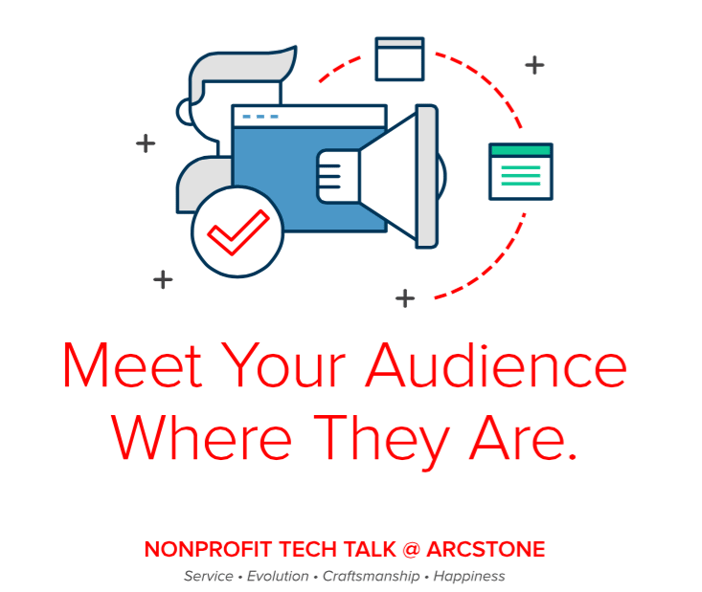
1) First Step: Here at ArcStone, we see the first step to any website design, marketing campaign, and tech decision as deeply understanding and meeting your audience where they are. To find them you need to build out your personas and use the profiles to guide each subsequent step. 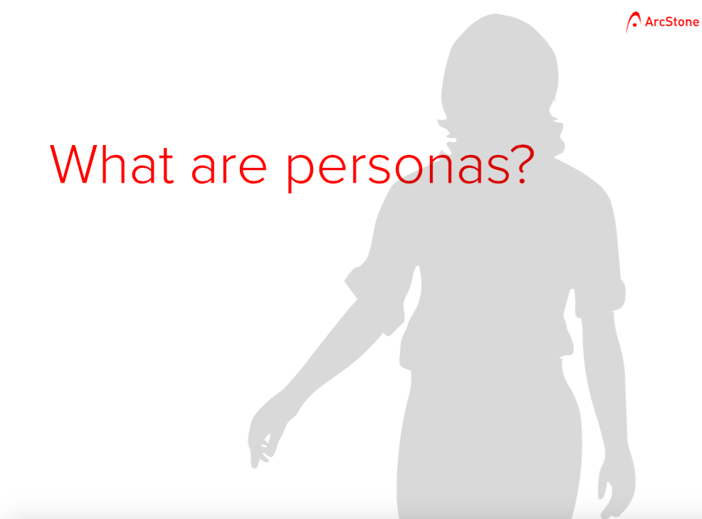
2) What are personas? Personas are fictional portrayals of your ideal customers. We can better understand them by describing what might be a typical day in their lives. This would include discovering their digital habits, who they trust, where they go to get their information, and in effect, how they would interact with your organization.
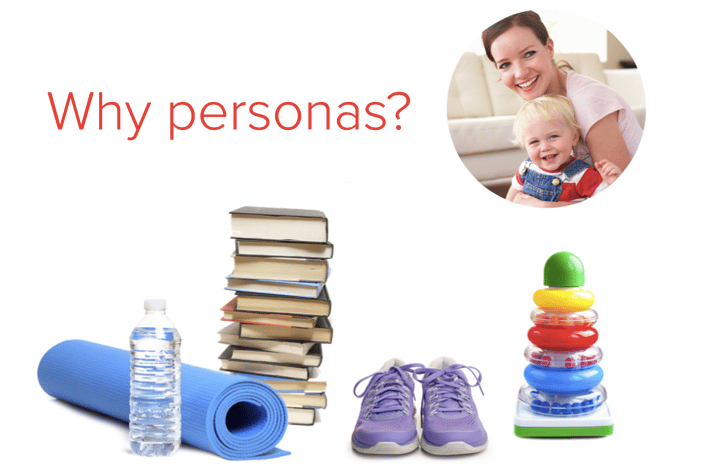
3. Why personas?
- To influence your targeted audiences - you need to first understand them, how they think, what they want and how they make decisions.
- To inform other decisions - type of content, content gaps, how content is displayed, where it is promoted.
- To reach them - the more thorough and imaginative you get with these descriptions, the closer you are to understanding their lifestyle and the better you are at reaching them.
- To better help them - walking through their day reveals when they are busy vs. when they are opening emails, where they might go when they ask questions, what they worry about, etc. Essentially you conclude how in the end, you may be able to help.
4) Ask yourself: Read the questions in red below. Take 5 minutes and think about one of your primary audiences.

More questions to ask: What action do you want them to take? What are their attributes? What are their habits? How do you need to make them feel for them to take the next step?
5) Building out your first persona: Below, you can read through an example persona we constructed for one of our clients. Our Tech Talk audience noted how they each felt they knew a few “Piper” types. For the organization for which we constructed Piper, we also constructed detailed personas for each of their other three audiences. These personas had very different days and thus, different digital habits.
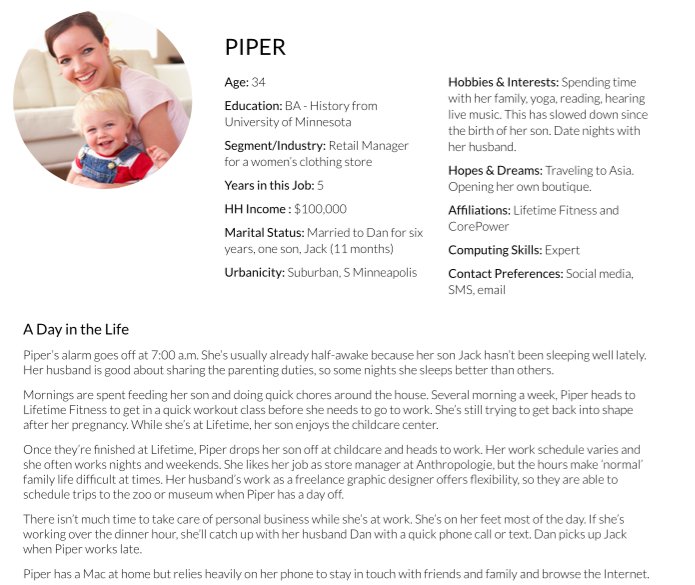
6) The steps you can take: How do you create personas? When Lisa's creating personas she combines a variety of techniques:
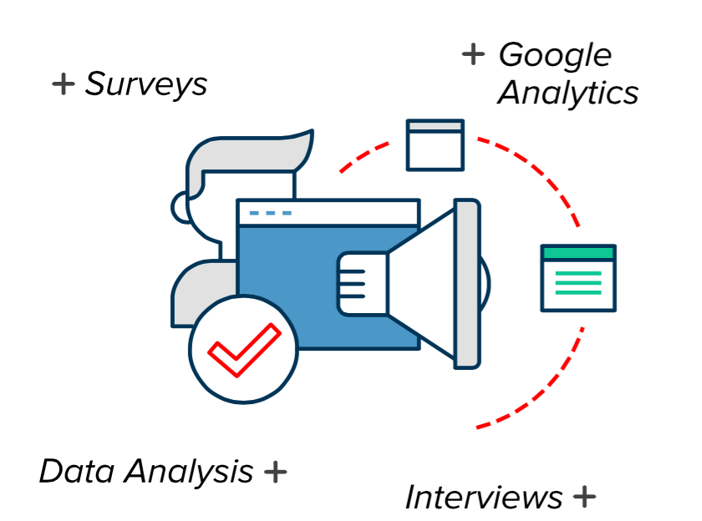
- Surveys
- Interviews - we ask the client for some of their customers (focusing on their most supportive, ideal customers), and we reach out to them to schedule phone interviews. It’s just a brief (~15 min.) conversation where we ask them about a typical day in their lives. In the process we discover what marketing efforts have worked for them in the past, and what has not.
- Donor / volunteer data analysis - what can you discern about your audience by reviewing the data?
- Google Analytics data - demographics, gender, age, affinity categories, in-market segments, technology
- You can also use our tool, the Audience Persona Builder.
- Study Google Trends, as discussed in this blog: Target Your Market
*Notable case studies: With many of the clients we've done this for, these steps provide great insight into the design and functionality of the website. In our analysis of the clients' previous sites and marketing efforts, we discover aspects that had really not worked for their audience. It reveals that sometimes what we think our audiences would do may be incorrect, and so interviewing them and using data is really the most effective way to reach them.
For example, in one case the site navigation was segmented very distinctly by audience - professionals, families, etc. Through the interview and content audit process, we found that there was actually a lot of content overlap between those audiences which led us to completely rework the navigation and update the design.
7) Organizing your actions: Now what? How do you use your personas to craft content and meet your goals?
Document clearly the channels, pages and content that is needed to help push your audience toward action. You can use a tool such as Trello to map content that is needed - such as video, blog posts, landing pages, social posts or contests.
Here is an example Trello board that shows you how content can be mapped out across various audiences. You can view the live, public version here.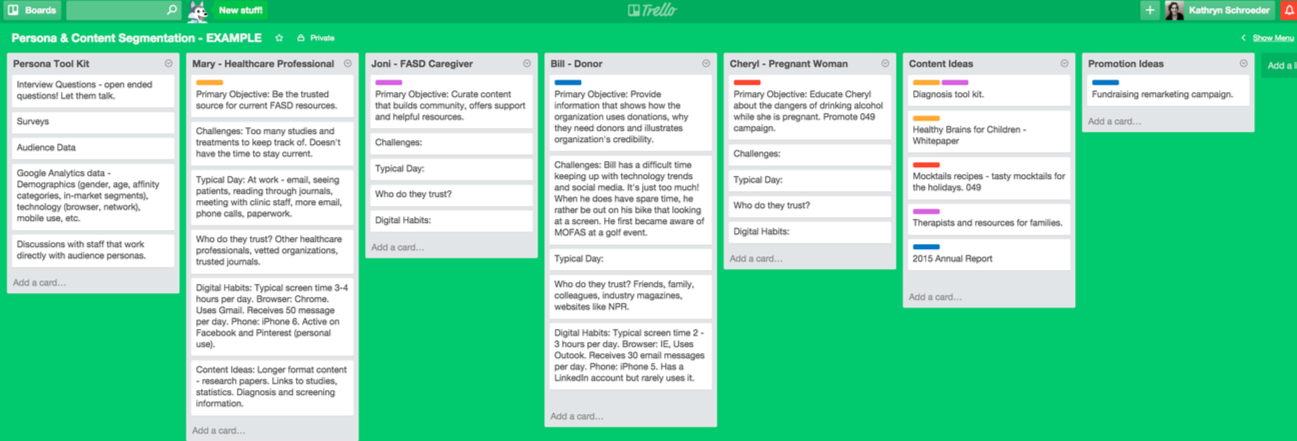
8) Your team: As seen in the graphic below, you need strong communication between your IT and marketing team, even with audience personas. The alignment between the two teams is critical as the profiles you create not only determine messaging and content but also technology. Each decision you make regarding technology should be made with your personas in mind, not just internal needs and efficiencies. Things to consider include; devices your audience uses, browser breakdown, and how technology integrates with other platforms.
For example, when choosing your donation platform, consider your target audience. Are they giving on mobile or desktop? Where are they when they decide to give? At an event? At home?

9) Take Action: We asked event attendees: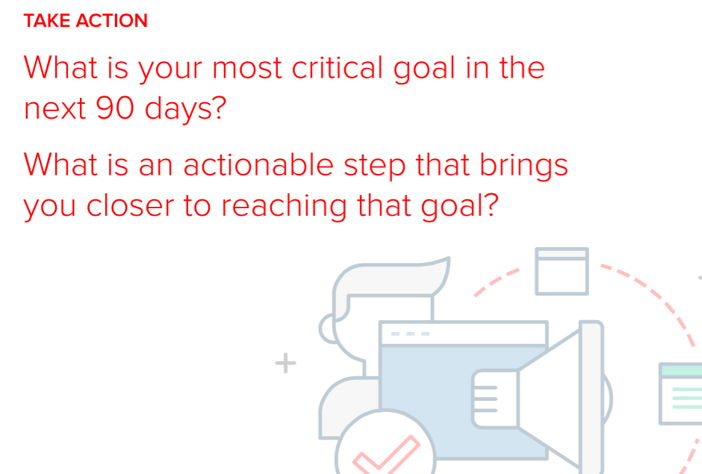
Reflect on these questions and then take your first step! If you are interested in having us assist with audience persona creation, please contact us today.
If you would like monthly updates on future events and marketing ideas in the nonprofit marketing realm, sign up for our newsletter, The Nerdy Nonprofit.